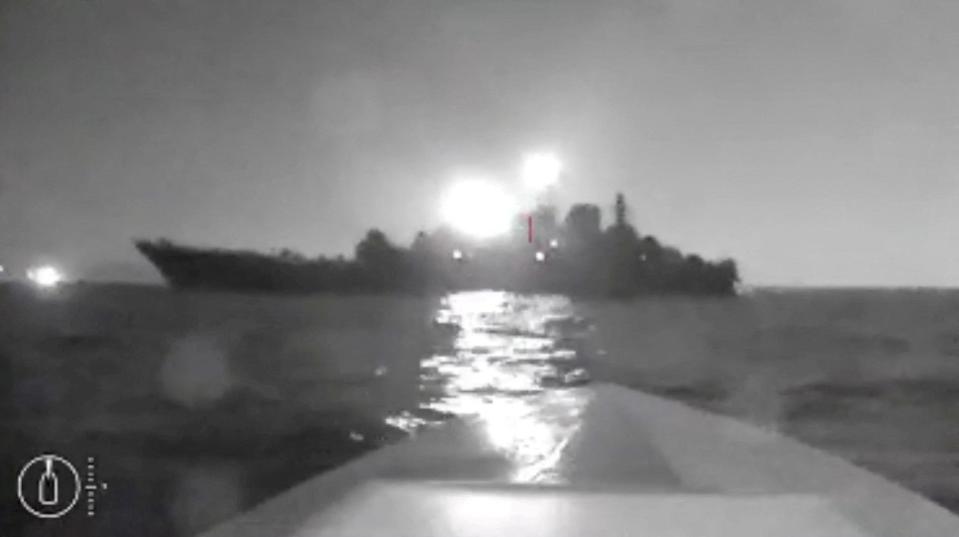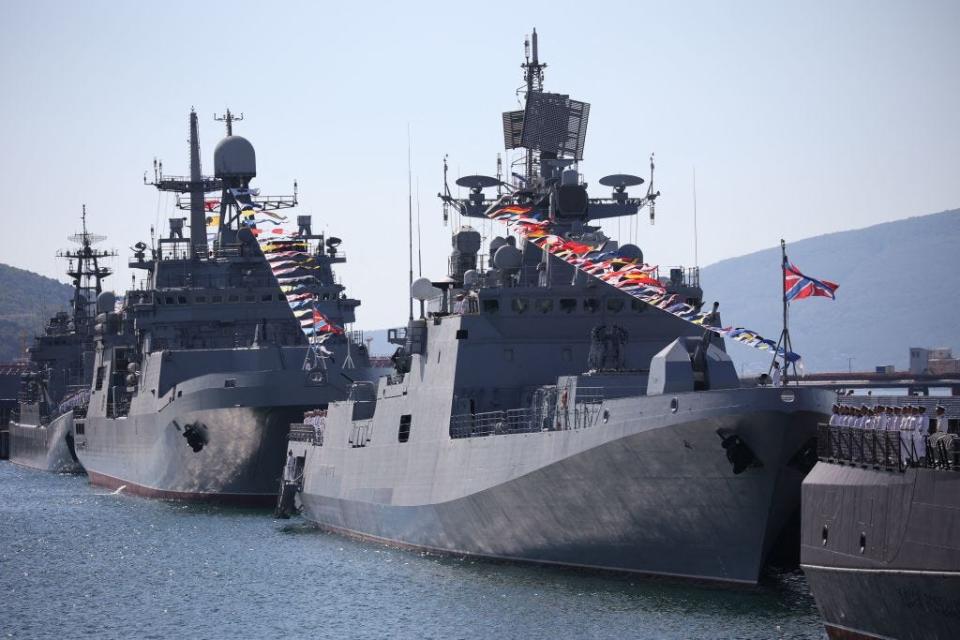Machine guns and combat aircraft aren't enough to stop Ukraine's drone boats from destroying Russian warships, general says
Ukraine has been using naval drones to damage and destroy Russian warships.
Moscow has made some efforts to defend against them, like putting machine-gun crews on ships.
But Kyiv is "still a few steps ahead," a Ukrainian general said.
Ukraine's formidable fleet of exploding naval drones has hurt the Russian Black Sea Fleet since these weapons were first introduced, leaving a trail of damaged and destroyed warships in its wake.
Though Moscow has made efforts to curb this threat, a general in the Security Service of Ukraine, or SBU, said Kyiv's attacks are still finding success, which has ultimately led to the reopening of a maritime corridor in the Black Sea and the relocation of some Russian forces in the region.
"The adversary immediately began to respond to the threat of naval drones, but we are still a few steps ahead," Brig. Gen. Ivan Lukashevych, whose SBU team has carried out some of the boat operations, told Business Insider.
Ukraine, which had no naval warships when it was first attacked, unveiled its naval drones in 2022. Kyiv has since sought to develop what it calls "the world's first fleet of naval drones" — which would rely heavily on uncrewed surface vessels, or USV, called Sea Babies — and recently launched a fundraising initiative to purchase dozens of these systems for the SBU.
Ukraine's Sea Baby drones have been used in attacks targeting Russian warships and infrastructure — including a key bridge — around the Black Sea.

Moscow has defended against these drone attacks and has even taken some out, but ultimately, it has been unable to stop them from inflicting serious damage.
The Russians' "first move was to deploy machine gun crews on their warships to shoot down drones and reinforce their air-defense capabilities," Lukashevych said. "Their planes and combat helicopters are constantly patrolling the coastline and waters of the western Black Sea."
The general said that a joint team made up of the SBU and Ukrainian naval forces "were quick to come up with ways to equip a Sea Baby in order to break through the defenses of Russian ships or other targets."
He added that "the drone's self-detonation mode is very restricted and does not cover the full range of threats."
To make these drones more of a headache for Russia, Ukraine has made new ones that are "stronger, more efficient, and deadlier" than earlier models, Lukashevych said.

The new drones have larger warheads, making them more durable in the water, and ensuring they can travel greater distances, such as from positions in southern Ukraine to the occupied Crimean peninsula across the Black Sea — and back.
"The Russians are very well aware of what our drones are capable of," Lukashevych said. "They have already tested the distance we can operate at, the speed at which we can strike, and the payload we can carry. So they are eager to learn some new details."
Staying one step ahead of the Russians also means that the SBU is testing and manufacturing drones in multiple locations and constantly relocating. Special operations are carried out from different command posts in different areas.
"We have modified our maritime drones into multipurpose systems," Lukashevych said, explaining this allows the SBU "to cope quite successfully with the Russian fleet in order to keep it away from Ukrainian shores."
Ukraine said in early February that it had damaged or destroyed more than 24 Russian warships — amounting to a third of the Black Sea Fleet — since the full-scale invasion began two years ago.

Naval drone attacks have also driven some of the Russian fleet away from its headquarters in Sevastopol, a port city in the southwestern corner of the Crimean peninsula, across the Black Sea to Novorossiysk in Russia.
Western intelligence has cautioned that the fleet is not out of the fight and can still perform its main duties.
Nonetheless, Ukrainian officials are still celebrating pushing Russian forces across the Black Sea because it's allowed Kyiv to reestablish a critical maritime corridor in the region after living under a crushing blockade.
"We managed to unblock the grain corridor and suppress the activity of Russian missile launchers firing from the sea at the territory of Ukraine," Lukashevych said.
The general added that "forcing the enemy to flee from the Black Sea was the goal we sought and it was achieved."
Read the original article on Business Insider

